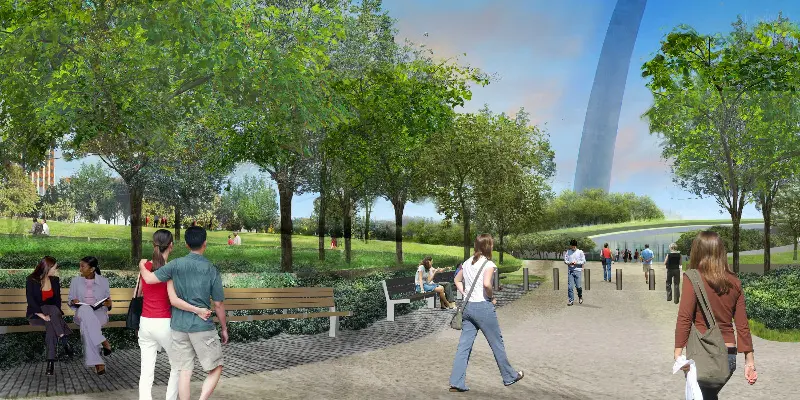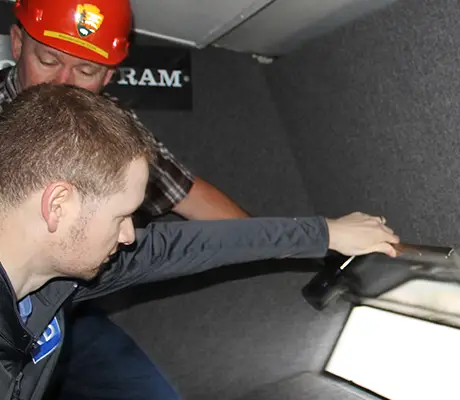Written By: Lindsey Buening | November 2018
As a designer, I spend a lot of time thinking about my audience before a presentation or considering an end user’s experience in a space that is not yet built. Using my imagination to think about how other people might use something I’ve designed is a thrilling part of my job. Over the past couple years I’ve found that and even more exciting part of my job has been to learn how some of my thinking has been completely wrong and how I might make it better.
I joined the project team for the museum exhibits in the middle part of 2016. A large part of my role was to gather the permissions needed for the copyrighted images in the museum, which as a side note, was a fascinating way to learn St. Louis history. Another role I played was as a member of the Universal Design Group, which tested the museum exhibits against the Principals of Universal Design and made corrections and improvements to the exhibits throughout the design review process.

“Universal Design is the design of products and environments to be usable by all people, to the greatest extent possible, with the need for adaptation or specialized design.” -Ron Mace, Architect
The Universal Design Group was a diverse committee of people with a wide range of abilities that found themselves united by the desire to create a museum that would allow all kinds of people to engage with the material being presented.
The anecdote from the project that I use to describe how Universal Design makes spaces that work better for everyone is about the museum entrance. Originally, this was designed as a stepped Entry Plaza which beautifully referenced Saarinen’s Grand Staircase leading down to the riverfront.

When the design concept was brought to the UDG, it went a little something like this:
UDG: How will Grandma enter in her wheelchair? How will dad get the stroller inside?
Designers: Well, see, there’s a ramp over here to the side.
UDG: Why separate families and groups as they enter? Why do wheelchairs and strollers need to go in through a side door that feels like an afterthought? Why can’t there be a design that creates the same grand entry experience for everyone?
Designers: But it’s like Saarinen’s stairs
UDG: …….
Designers: We’ll get back to you.
And they did come back, with a better design that would enable the same experience for all users with no ramp off to the side. Two entry ramps through doors that could be easily operated if your hands were full or from a wheelchair that gently curved around a reflecting pool that elegantly references Saarinen’s original design.

There were a lot of lessons like this learned throughout the Universal Design review process and revisions to the exhibit designs. I quickly came to understand that my imagination about how someone would use a space was skewed by an uncreative view of people’s abilities based solely in my own experience. Listening to the needs and wants of people with experiences and abilities different from my own expanded my view of how space works for a variety of people. If I could pass on one thing from this experience it would be that inclusive design isn’t something we do for people, it’s something we do with them.









